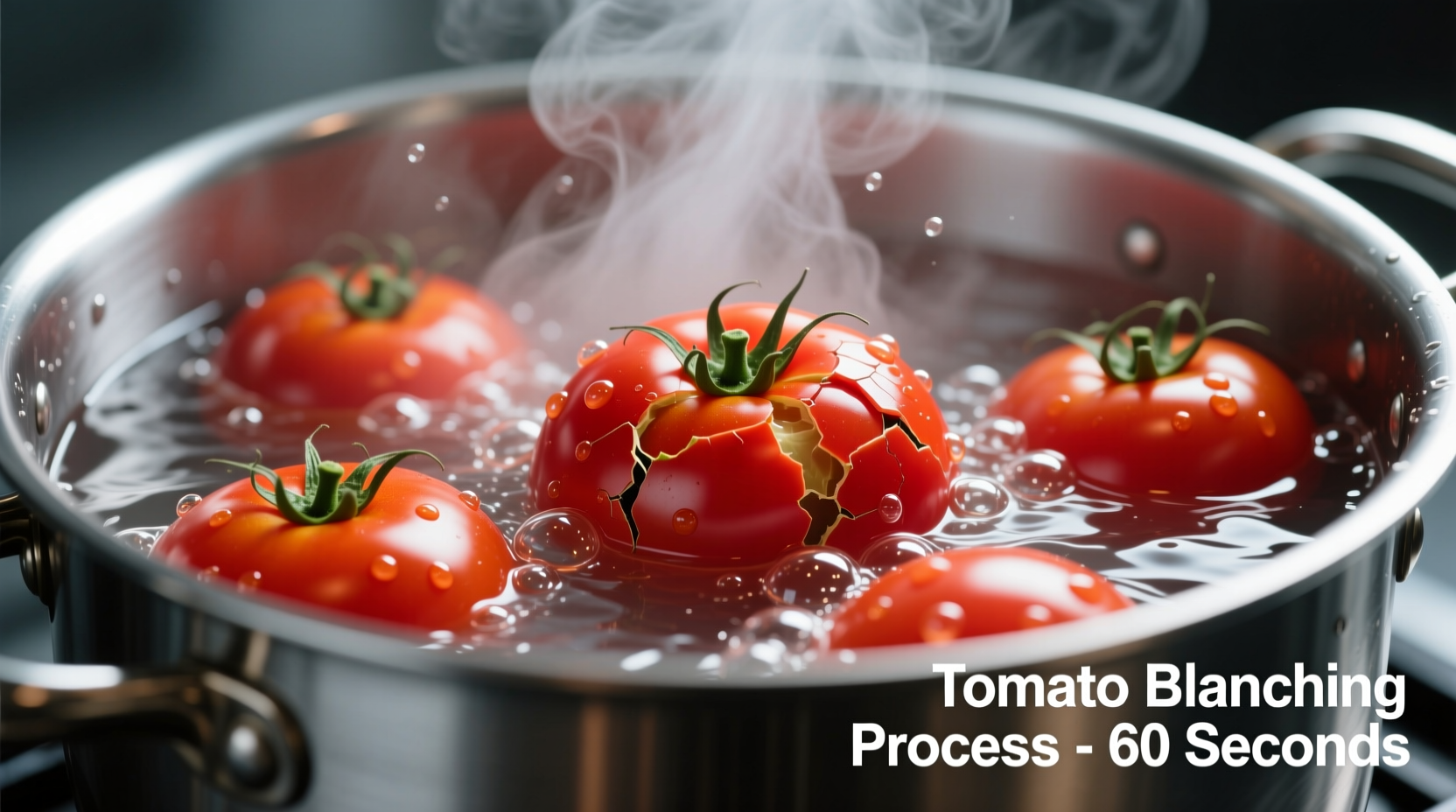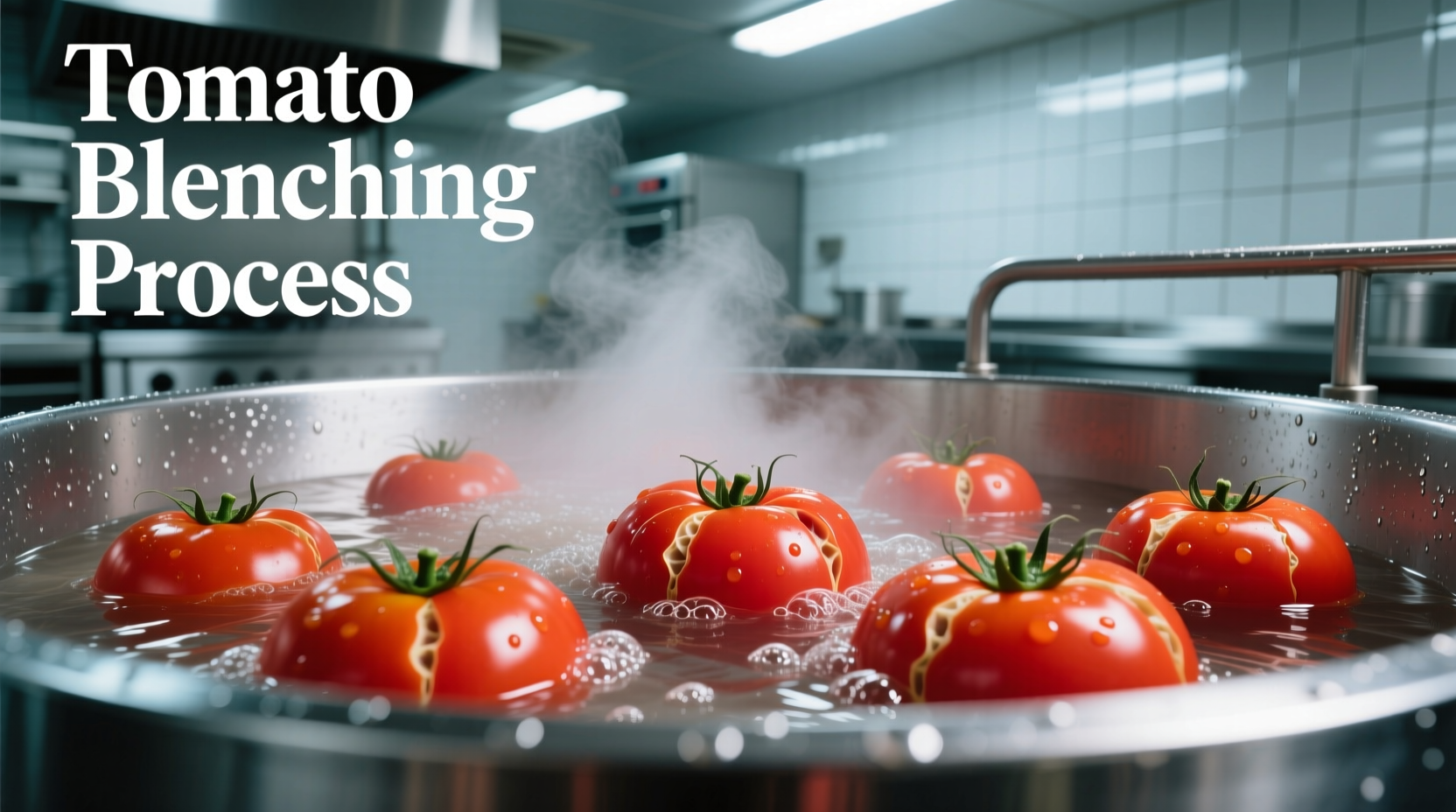Blanching tomatoes takes just 60-90 seconds in boiling water followed by immediate ice bath immersion to loosen skins for easy peeling while preserving flavor and texture. This essential kitchen technique works for all tomato varieties and is crucial for sauces, canning, and freezing.
Why Blanching Transforms Your Tomato Cooking
Tomato blanching isn't just another kitchen step—it's your secret weapon for perfect sauces, salsas, and preserved tomatoes. Professional chefs and home cooks alike rely on this simple thermal shock method to remove skins without damaging the fruit's delicate flesh. When you master this technique, you'll eliminate tough, bitter skins from your dishes while maintaining optimal texture and flavor.
The Science Behind Perfect Tomato Blanching
Blanching works through precise thermal manipulation. The sudden temperature change causes the tomato skin to contract at a different rate than the flesh, creating separation. According to USDA food preservation guidelines, this process also helps destroy surface enzymes that can cause discoloration and flavor degradation during storage.
| Tomato Variety | Blanching Time | Skin Removal Difficulty |
|---|---|---|
| Roma/Plum | 45-60 seconds | Easy (thick skin) |
| Globe/Beefsteak | 60-75 seconds | Moderate |
| Cherry/Grape | 30-45 seconds | More difficult (thin skin) |
Essential Equipment Checklist
- Large pot with boiling water (minimum 4 quarts)
- Slotted spoon or spider strainer
- Large bowl filled with ice water
- Sharp paring knife for initial scoring
- Colander for final draining
Step-by-Step Tomato Blanching Guide
- Score the tomatoes: Using a sharp knife, make a shallow "X" on the bottom of each tomato. This critical step creates an entry point for water penetration and ensures clean skin separation.
- Prepare ice bath: Fill a large bowl with equal parts ice and cold water. This immediate temperature shock stops the cooking process.
- Boil water: Bring a large pot of water to rolling boil. Add 1 tablespoon salt per gallon to help maintain tomato structure.
- Blanch tomatoes: Carefully lower 3-4 tomatoes into boiling water using a slotted spoon. Timing varies by size:
- Cherry tomatoes: 30-45 seconds
- Medium tomatoes: 45-60 seconds
- Large tomatoes: 60-90 seconds
- Shock in ice bath: Immediately transfer tomatoes to ice water for at least 2 minutes. Don't skip this crucial step—insufficient cooling makes skin removal difficult.
- Peel the skin: Starting at the "X," gently pull the skin away. It should come off in large sections with minimal pressure.

Avoid These 3 Common Blanching Mistakes
Even experienced cooks make these critical errors that compromise results:
Over-Blanching Leads to Mushy Tomatoes
Exceeding recommended times causes the flesh to begin cooking, resulting in texture loss. The National Center for Home Food Preservation emphasizes that precise timing preserves the tomato's cellular structure while loosening the skin.
Skipping the Ice Bath
Removing tomatoes from boiling water without immediate cooling continues the cooking process. Food science research shows that residual heat can raise internal temperature by 5-10°F during transfer time, damaging texture.
Using Dull Knives for Scoring
A dull blade crushes rather than cuts the skin, preventing proper water penetration. Professional chefs recommend using a razor-sharp paring knife to create clean, shallow incisions that facilitate perfect skin separation.
When Not to Blanch Tomatoes
While blanching is invaluable for many applications, certain situations call for alternative approaches:
- Fresh salads: Skins provide texture and nutrients—leave them intact
- Quick salsas: Blend unpeeled tomatoes for rustic texture
- Heirloom varieties: Some delicate heirlooms have skins that separate poorly—consider roasting instead
What to Do With Perfectly Blanched Tomatoes
Now that you've mastered the technique, maximize your results:
Immediate Use
Use within 24 hours for sauces, soups, or stews where skin removal improves texture. Blanched tomatoes integrate seamlessly into dishes without tough skin fragments.
Freezing for Long-Term Storage
According to University of California Cooperative Extension guidelines, blanched tomatoes freeze exceptionally well. Place peeled tomatoes in a single layer on a baking sheet, freeze until solid, then transfer to airtight containers. They'll maintain quality for 10-12 months.
Canning Safety Considerations
When canning blanched tomatoes, always follow current USDA guidelines for proper acidity levels. The blanching process doesn't affect pH, so maintain proper citric acid or lemon juice ratios for safe preservation.
Frequently Asked Questions
Can you blanch tomatoes without scoring them first?
While possible, skipping the scoring step makes skin removal significantly more difficult. The shallow "X" creates a starting point for the skin to separate. Without it, you'll spend twice as long trying to peel tomatoes, and many will tear during the process.
Why do my blanched tomatoes still have skin sticking to them?
This typically happens when blanching time is insufficient or the ice bath isn't cold enough. Smaller tomatoes need less time than larger ones. Ensure your ice bath has equal parts ice and water, and allow tomatoes to cool for the full 2 minutes before attempting to peel.
Do I need to remove tomato seeds after blanching?
Seed removal is optional and depends on your recipe. For smooth sauces and soups, removing seeds reduces excess moisture. For rustic salsas or quick preserves, leaving seeds adds texture and flavor. The blanching process makes seed removal easier if desired.
Can I blanch tomatoes in the microwave?
No—microwave blanching doesn't provide the consistent thermal shock needed for proper skin separation. The USDA specifically recommends against microwave blanching for any produce intended for long-term storage as it doesn't adequately destroy enzymes.











 浙公网安备
33010002000092号
浙公网安备
33010002000092号 浙B2-20120091-4
浙B2-20120091-4